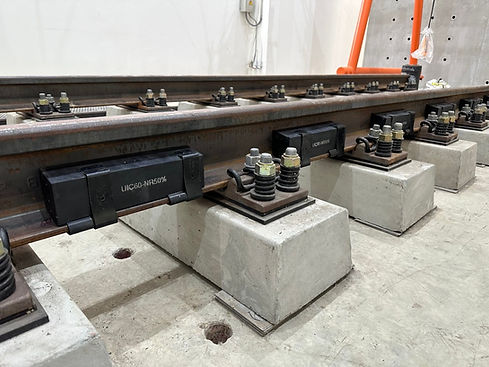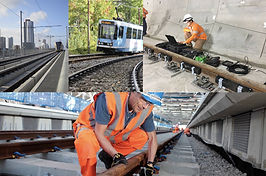top of page


Green Tuned
Rail Damper 1.0
-
3-9 dB(A) Reduction Noise at Source
-
Tuned and Customized for specific rail systems
-
Greater Ecological Friendliness by employing resilient natural material in conjunction with recycled polymer
-
Product Well Proofed Up to TRL8
-
100% Thailand Local Content
-
Significantly increased Track Decay Rate (TRD)



Key Performance

Key Performance



GTRD effective damping between 500-6000Hz
Best solution for high rise building


Can be tuned to the frequency band with the highest noise level

Reduces noise at the source


Easy and quick to install with more than 100m/hrs
Has no impact on track maintenance activities, such as Tamping or Grinding


Well proofed over 20 years and over 600km installed worldwide
Less rail corrugation


Fire resistant to UL94-HB standard
Maintenance free


Can be reused when rails are changed
Visually unobstructive, unlike noise barriers

Knowledge Center

Knowledge Center
What causes
railway noises?
1. Train motor noise
2. Aerodynamic noise
3. Wheel-rail noise or Rolling noise
Rolling noise caused from interaction between wheel and rail. The vibration and radiation of both wheel and rail will generate the rolling noise.
What is
Track Decay Rate (TDR)?
Track decay rate (TDR), in dB per m (dB/m), is widely adopted by the railway industry to indicates how far the vibration of certain frequency could travel along a rail [1]. Low TDR allows accumulation of vibration energy and leads to high rail vibration and excessive rail noise.
How to
mitigate railway noises?
1. Control at noise source. Such as
—Rail grinding
—Wheel reprofile
—Wheel damper
—Rail damper
2. Noise reduction at the transmission path. Such as
—Multi-plenum system
—Train skirt
—Noise wall barrier
—Noise enclosure
—Resilient base plate
—Floating slab track
3. Protection at the receiver
—Acoustic balcony
—Acoustic window
GTRD Partners
Groups









Contact
bottom of page